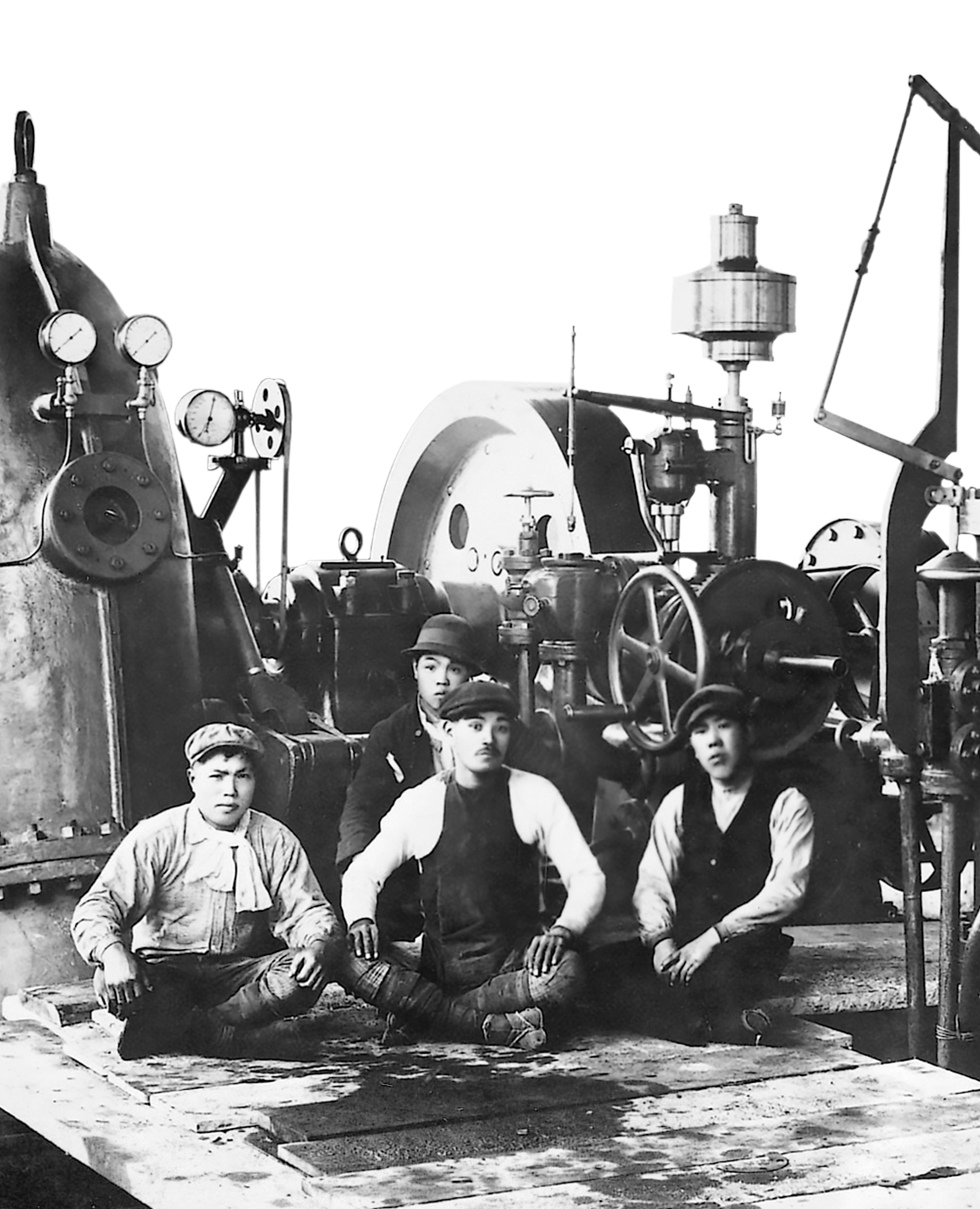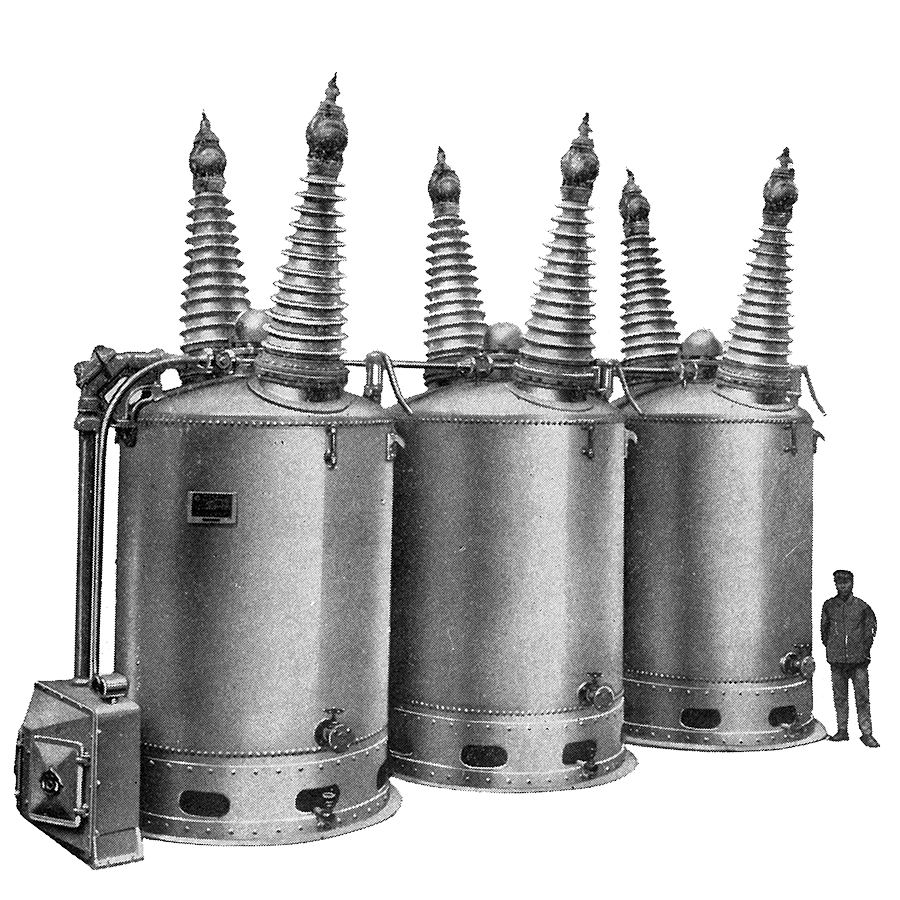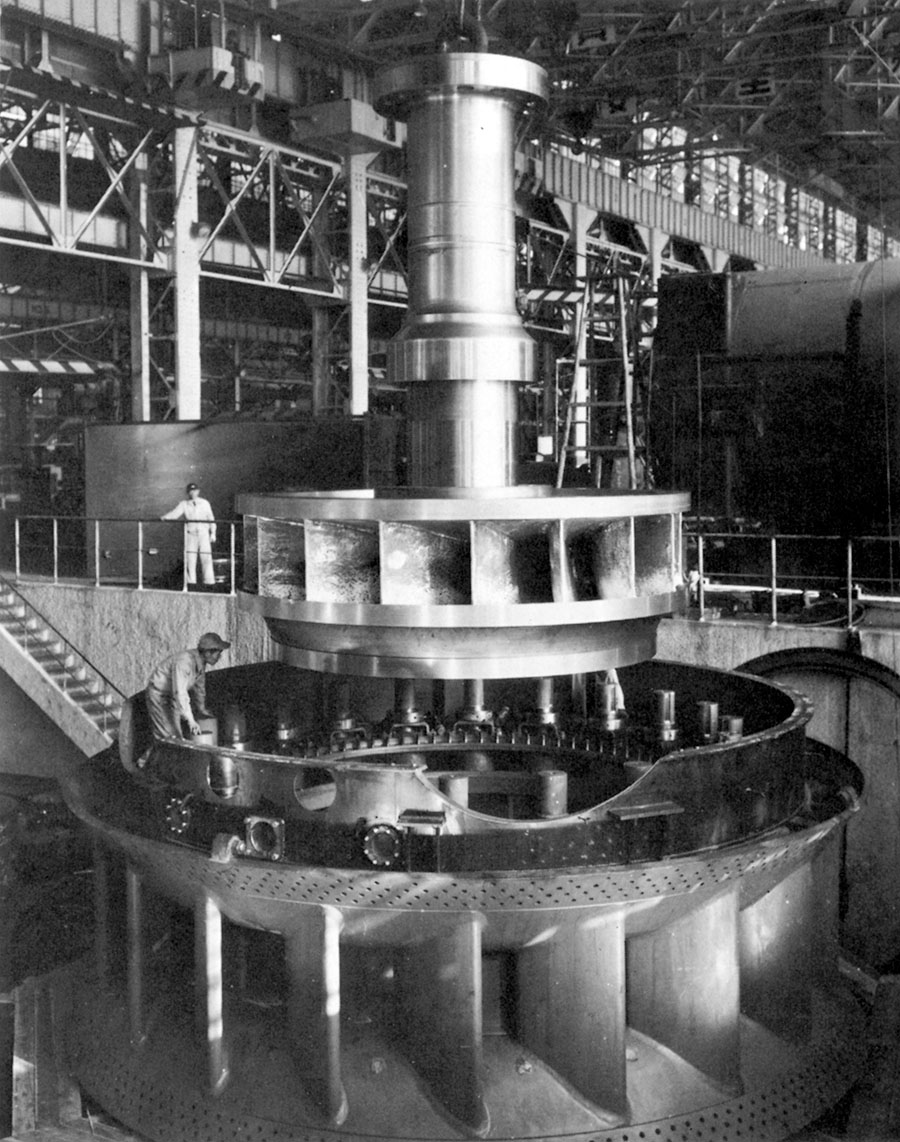
January 15, 2024 was the 150th birthday of Namihei Odaira, the founder of Hitachi, Ltd.
Since its founding, we have taken on many different social issues through its energy business while supporting Japan's modernization and high economic growth.
Today, it is expected that energy be cleaner and more stable.
Below, we share our wish to continue to contribute to the future of sustainable energy through our energy business. The Founding section looks back on our history as we evolved in parallel with the growth of Japan and the Future section depicts our renewed determination.


As the age of electricity began, Japan was on its way to modernization.
In its early days, Hitachi took on many challenges, aspiring to make electric machinery on their own.
We introduced new technologies from other countries and sought to make them domestically. In 1910, a repair factory in a mine built a five-horsepower induction motor. This is the oldest of its kind designed and manufactured by Japanese people and it still exists today.
Since then, we have stayed true to its philosophy, "Contribute to society through the development of superior, original technology and products," and supported the evolution of the energy industry.
In the past, energy was the bedrock of the redevelopment of the country.
We have established a history and accumulated technology, enabling our energy business to be a path toward supporting the new world starting now.
![]()

The five-horsepower motor that has been designated an important cultural property
In 1910, in the same year that Hitachi, Ltd. was founded, a five-horsepower motor was manufactured under the leadership of Namihei Odaira. The oldest motor of its kind designed and manufactured by Japanese that exists today is a symbolic Hitachi product. The motor and its design drawing were designated an important cultural property in June 2023. At that time, Japanese industry relied on foreign-made industrial machinery. As the country moved toward modernization, it faced the need of shifting to domestic production technologies. The five-horsepower motor also originated from our desire to make electric machinery ourselves. This is the starting point of our mission, "Contribute to society through the development of superior, original technology and products," and it is also the origin of Hitachi's energy business.

Hitachi took the largest share of the transformer market, beating out foreign-made products.
During World War I, even a 1,000-horsepower power generating waterwheel was hard to manufacture domestically. At that time Hitachi grew to where it was able to build a 10,000-horsepower waterwheel. A turning point came: the reconstruction after the 1923 Great Kanto Earthquake. Nearly half of the households in Tokyo were without power and many companies were damaged. Having escaped significant damage, Hitachi Works increased its production of substation equipment, transformers and other products based on the belief that its primary task was the reconstruction of the Keihin area. Consequently, this experience led to the establishment of mass production technologies and laid the foundation for the company's rapid progress in the Taisho and early Showa period. It was also around that time that Hitachi was able to become one of the top companies in terms of their share of the circuit breaker market, beating out foreign-made products. Circuit breakers are an indispensable part of safe power transmission.

A 100,000-kW vertical Francis water turbine (delivered to Sakuma Power Station)
After World War II, Hitachi leveraged its pre-war track record and advanced its development of large power sources such as hydroelectric, thermal and nuclear power sources to meet the growing demand for electric power. The 100,000-kW vertical Francis water turbine for the Sakuma Power Station and the thermal power generator for the Sendai Thermal Power Station are our products that are representative of power source development in and after the 1950s. We were also involved in the Sunshine Project which started in 1974 when Japanese energy policy was reconsidered after the oil shock. We also focused on research and the technological development of solar, geothermal hydrogen and many other kinds of energy. This is how our energy business, which supports our social infrastructure, expanded widely.


Today, demand for clean energy is growing as we move toward a sustainable future.
Toward achieving carbon neutrality, Hitachi is committed to our mission of supporting a cleaner and more stable supply of energy.
Power grids, energy solutions, nuclear energy,
technologies and experience that has been accumulated over many years, advanced digital solutions.
We have leveraged all of these in our continued pursuit of innovation. For over one century, we have supported the energy which is a driving force in people's lives and society.
Our energy business continues to be committed to the future of sustainable energy for the benefit of current and future generations of people.
![]()

Today, climate change is becoming worse. It is a global issue. The introduction of renewable energy is accelerating against the backdrop of the global trend toward decarbonization. At the same time, in terms of demand, the energy industry is facing a big turning point in its response to emerging needs represented by the spread of EVs, the growth of data centers and the electrification of industries. Also, the steep increase in the prices of resources due to the insecurity of international affairs an emerging issue related to energy. Given these facts, Hitachi is able to contribute to society because of its long history and established track record in the energy business as it strives to achieve carbon neutrality by 2050.

Toward achieving carbon neutrality, Hitachi promotes collaborative creation with many different stakeholders in different energy-related areas, including power grids, energy solutions and nuclear energy. We support the development of the energy value chain as a whole by leveraging the experience and technologies that it has accumulated to date, including advanced digital technologies. More specifically, we will contribute to the development of a new energy system through our energy solutions such as more accurate power demand forecasts, the more efficient operation of power stations and the optimal control of decentralized power sources and we will support a more stable supply of cleaner energy.

For future generations of people and the future of the Earth, Hitachi's energy business continues to lead initiatives with the goal of resolving many different social problems toward achieving carbon neutrality. Combining our strengths in advanced products, services and energy solutions and our digital technologies including Lumada, we will innovate in the energy domain from two different perspectives, DX (digital transformation) and GX (green transformation). Hitachi will use all of these strengths in its efforts to make sure society and future generations of people can live better lives and contribute to a sustainable future.